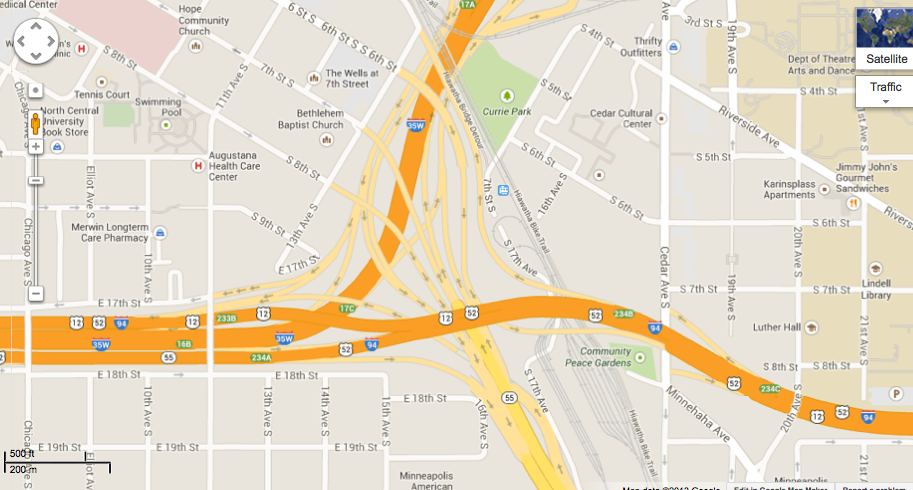It separates awesome hippy hangouts like Seward from the thriving East African hotspots in Cedar-Riverside, trendy downtown from the University hipsters. The Vikings stadium, the Mississippi River, Little Earth Indian Reservation (one of the largest urban Indian reservations), the University of Minnesota, the best coop in the cities, Hennepin County Medical Center and the Mill City Museum are all within one mile of this highway maze. Did the city miss the memo about how mixing folks is good for growth?

 RSS Feed
RSS Feed